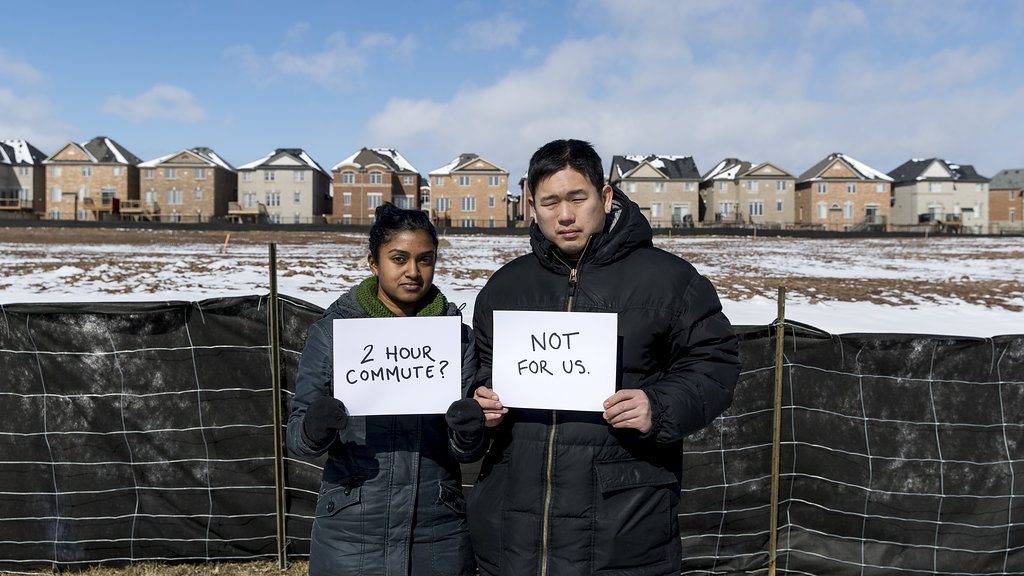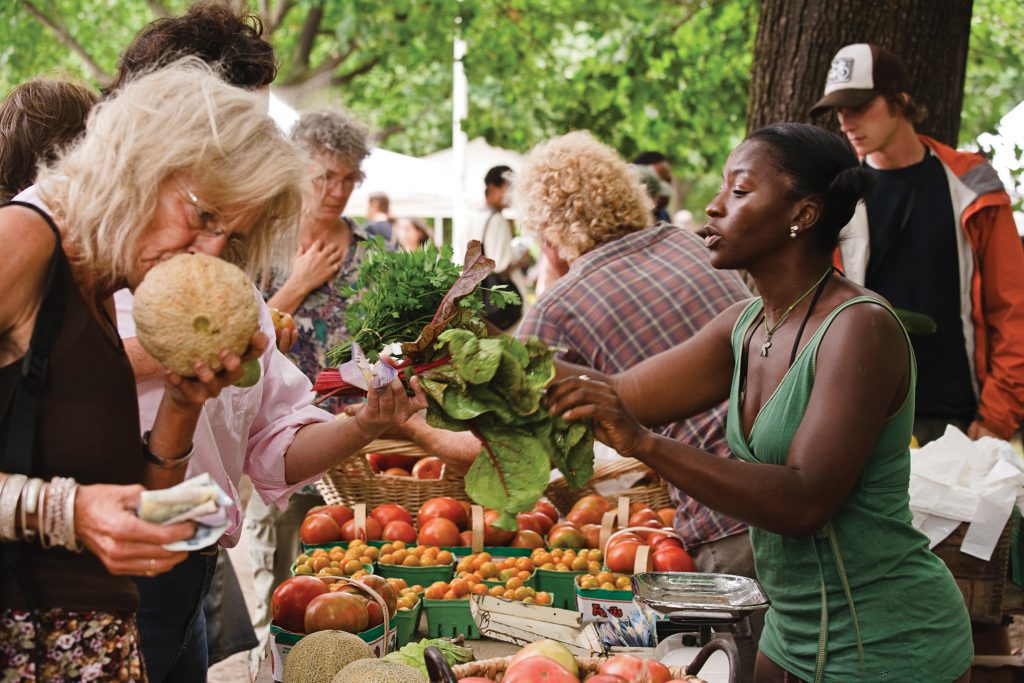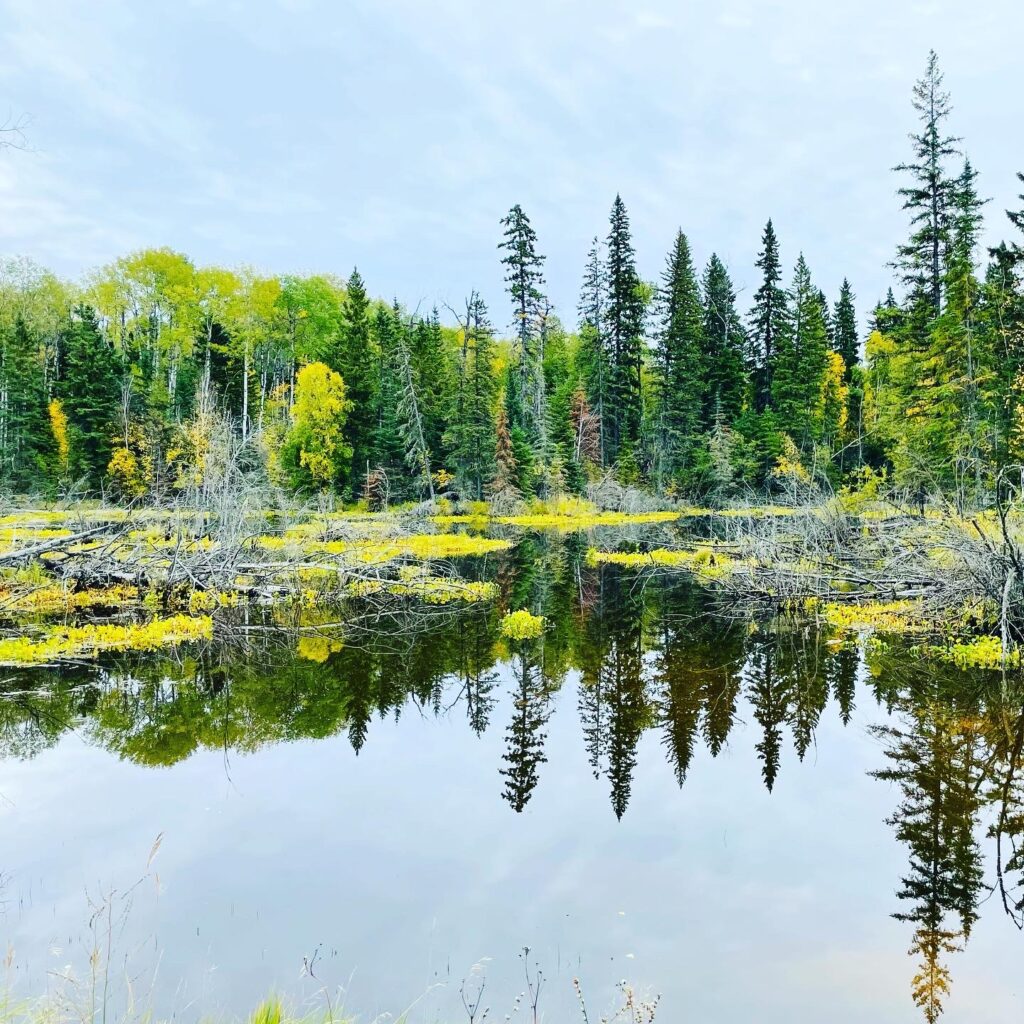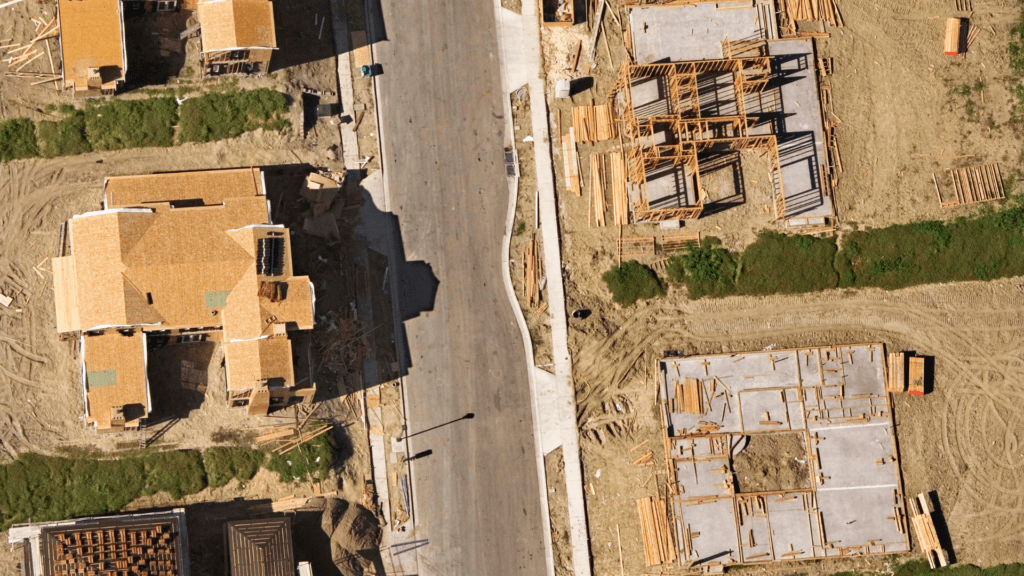Concerned about how Bill 66 threatens to open up the Greenbelt to development? Sign the petition to Stop Bill 66 here.
Sprawl developers and speculators are pushing to open up Ontario’s Greenbelt to allow housing to be built on it. But there is more than enough land already designated in the Greater Golden Horseshoe (GGH) for housing until 2031 and beyond.
There isn’t a housing supply issue, there’s a housing cost issue. And building more mega mansions in the Greenbelt isn’t going to make housing more affordable, nor is it going to create housing where people want to live.
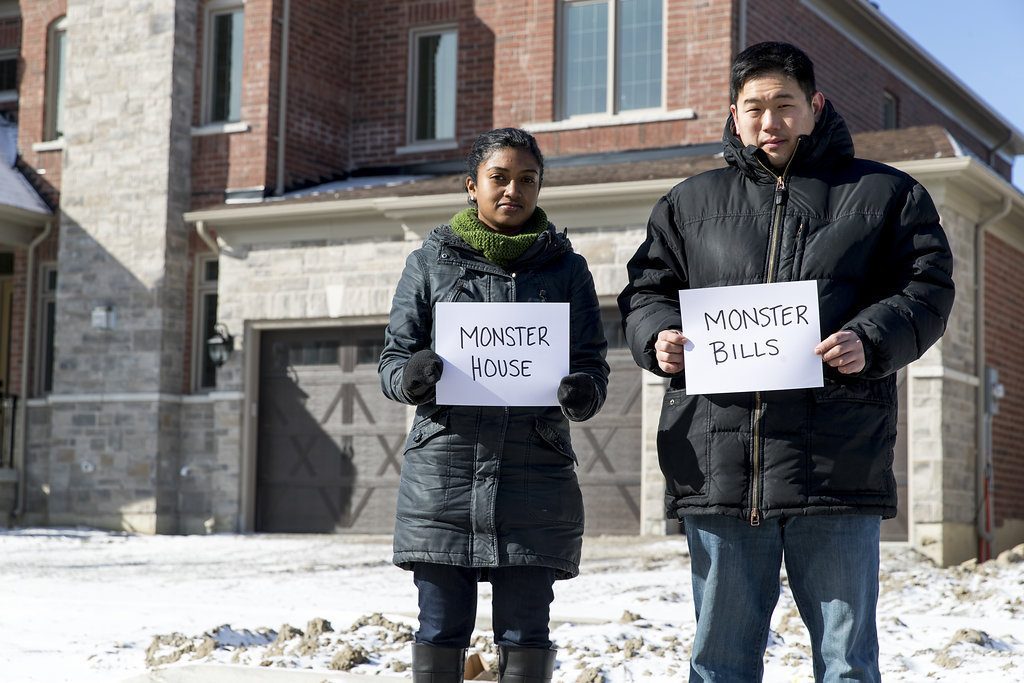
Back in the 1990s, the conservative government brought in the Oak Ridges Moraine Conservation Plan to protect the ‘rain barrel of Ontario’ from sprawl. Since then we have learned that sprawl is costly. Not only do we lose farmland, but extending infrastructure like pipes, highways and public transit to ever distant places incurs debt which ultimately ends up coming out of taxpayer’s pockets.
Here are a few important facts you should know:
Fact #1 : We need more places to live in our cities, not more houses built on farm land.
By 2041, 13.5 million people are expected to live in the Greater Golden Horseshoe. There are over 300,000 acres (125,000 hectares) of land available for development within the existing urban boundaries of towns and cities within the Greater Golden Horseshoe. There is no need to open up the Greenbelt.

Over the last few years about 70,000 housing units per year have been built. The number of units built has historically kept pace with population growth. But the type of homes we are building needs to change. For example, demographic trends suggest the number of people per households is decreasing, but a large percentage of housing being built is still single family housing (with space for 6 or more people, but increasingly housing fewer than that) far away from where jobs are located. We need to change our growth model. Instead of large homes built on distant farmland we need semis, townhouses and apartments built closer to jobs, transit, and services.
Fact #2: Monster homes on farmland are expensive and don’t supply the housing young people or the economy needs to thrive.
Expensive estate style houses built on distant farmland make land speculators rich but do little to provide homes where people would prefer to live.
The new provincial Growth Plan encourages a variety of homes to be built closer to transit in city centres. Some developers are building smart compact communities using this approach and we need more, not less, of this type of development.
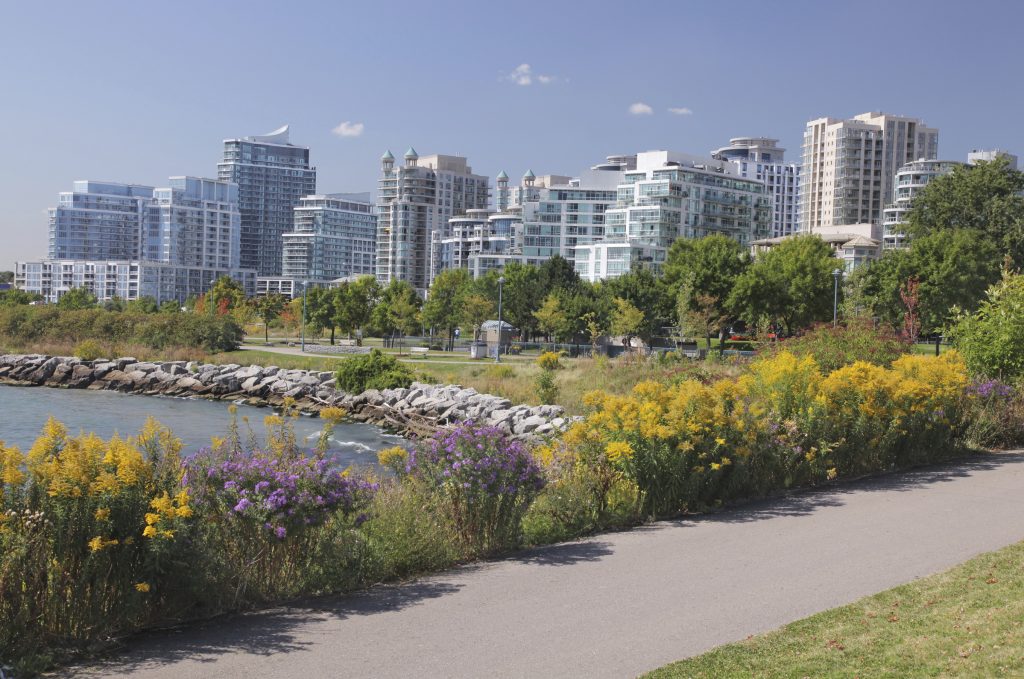
Fact #3: The cost of housing is related to location. People don’t want to live in distant subdivisions, they are forced to.
Independent studies show the cost of housing is related to location. People would rather live in a smaller house with a shorter commute than a large home far away and they are willing to pay for it. Most of us want to live in walkable neighbourhoods but few of us can afford to. Affordable housing is available but difficult to find where demand for housing is high. More housing options close to transit may reduce some of the pressures that are driving up home prices in the city.
Fact #4: Sprawl costs us all, more gridlock, higher commuting costs.
When housing isn’t available in the city people must drive until they find housing they can afford. Sprawl paves over farms and forests that provide local food, clean our air and absorb carbon. Living far away from work affects the environment, your health, budget and quality of life. More commuting means less time with family and friends, increased air pollution, and more time sitting behind the wheel, instead of at the gym or in your backyard with your kids. The cost of owing and maintaining a compact car is estimated at over $8,000 per year, whereas transit costs between $1500.00 and $3,000 per year. Over the 20 year life of a mortgage that $6,000 differential can add up to an extra $120,000 cost for that distant house ($240,000 if you are a two car family).
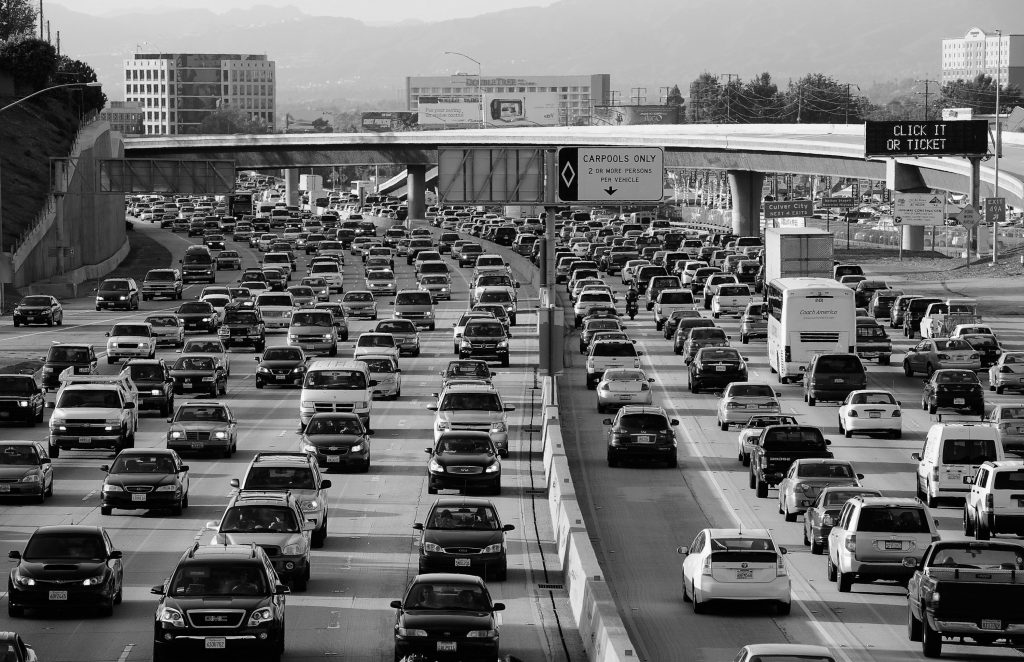
Fact #5: More compact cities and towns mean lower taxes, lower GHG’s.
Building more far flung housing increases property taxes by driving up municipal debt related to building and maintaining roads, sewers and water pipes to far flung, low density housing developments. Car dependent development produces about 3 times the greenhouse gas emissions of compact city building. What’s the solution? Build a variety of housing options near existing transit stations in our urban centres. 42% of housing being built is detached single family homes, less than 10% is apartments under 5 stories and 27% apartments 5 stories or more, and very few of those are rental apartments.
Fact #6: Our economy thrives when we have enough housing for workers in our cities.
Cities need workers of all income levels to thrive. While $15.00 an hour may be a low but living wage in Kenora, in a city like Toronto it isn’t even enough to pay rent. More housing options, especially rental units in our cities near public transit can reduce sprawl, provide needed housing options and improve the vibrancy of our cities.
Fact #7: The Greenbelt is working, don’t dismantle it.
Since its inception 12 years ago, farmland in the Greenbelt had stopped disappearing, and important natural areas are protected. No farmland in the Greenbelt was lost to development between 2005-2014. This means farmers can plan to farm into the future. It also means we all get more local food and we have forests, wetlands and fields to filter our water and provide places to interact with nature.
However, outside the Greenbelt, 7,500 hectares of farmland in the GGH was lost to urban expansion between 2005-2014. Chipping away or destroying the Greenbelt by building new subdivisions on it would be a serious and costly mistake.





